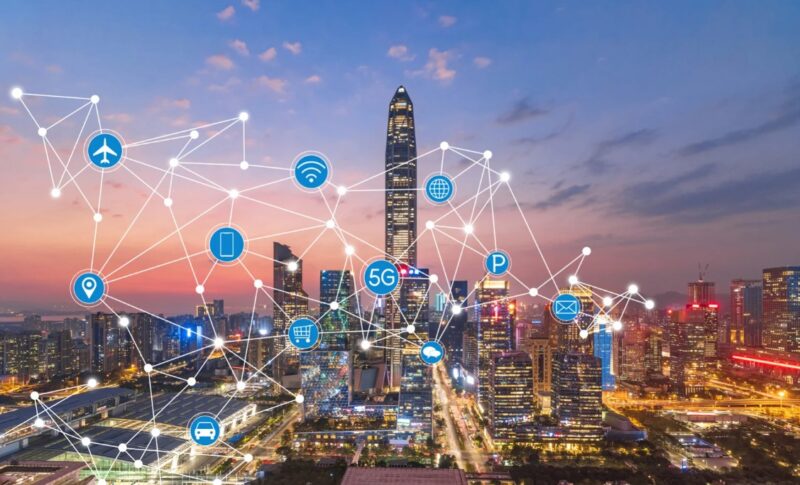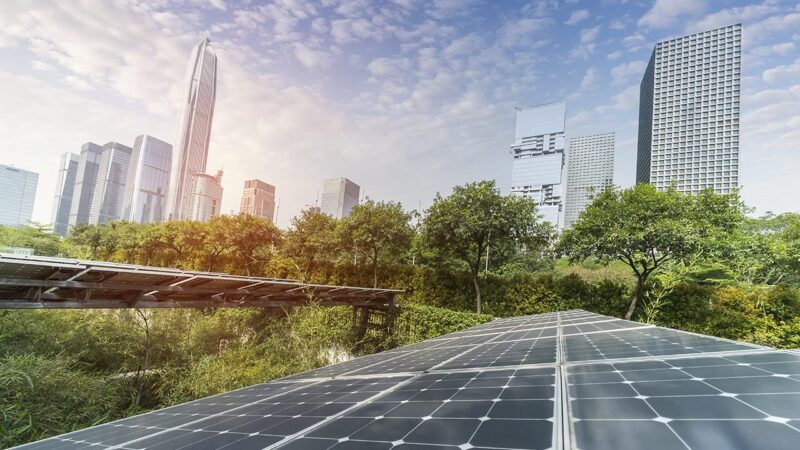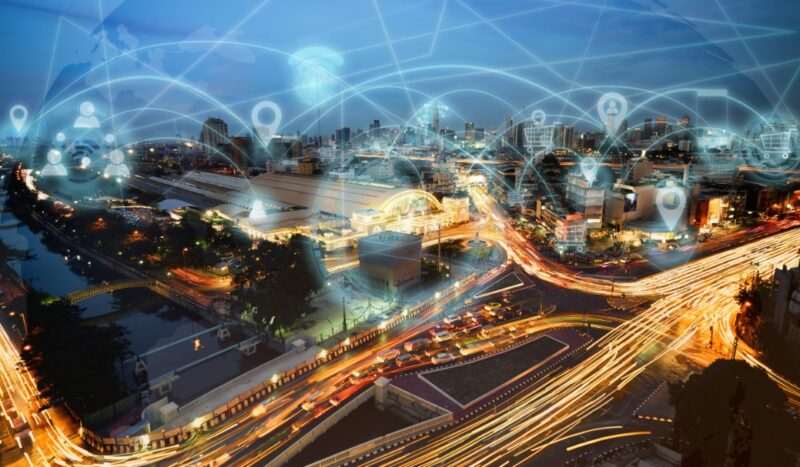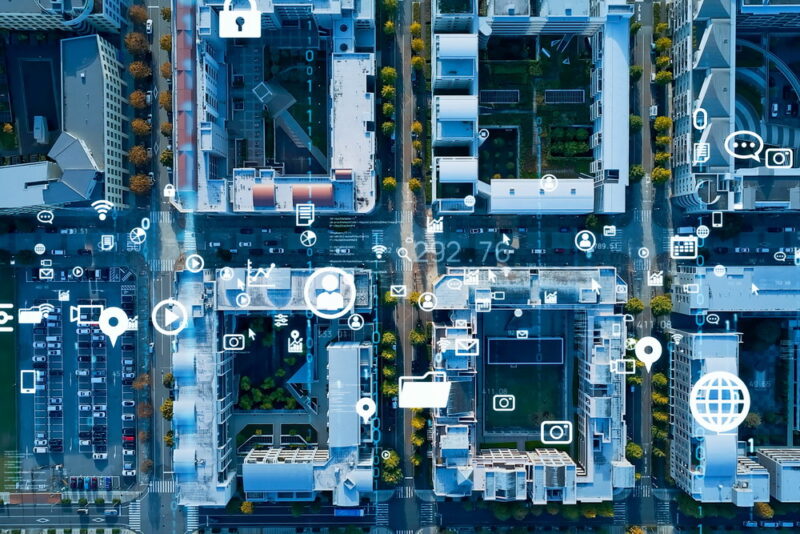Half the world’s population currently lives in cities, and rapid urbanization continues across the globe. Making cities more livable in the long term depends heavily on embracing technology and smart design.
Internet of Things (IoT) networks and data-driven solutions are critical to handling growing populations while improving transportation, safety, sustainability, and quality of life. As urban centers expand, integrating artificial intelligence and machine learning becomes increasingly necessary for managing complex city systems and predicting future needs.
Innovation in urban planning must balance technological advancement with human-centered design to create inclusive, resilient communities.
Keeping Citizens Connected
Reliable, citywide wireless connectivity helps keep communities engaged and informed via multiple channels, like online portals, mobile apps, public kiosks, and digital displays. According to the good folk at Blues.com, IoT for smart cities often begins rolling out free public Wi-Fi in government buildings, schools, libraries, and parks so families without home internet access aren’t left behind.
City apps then provide quick access to paying bills, reporting issues, registering for activities, and handling tasks digitally instead of in offices. Well-designed municipal websites organize all essential city services, upcoming events, and leadership decisions. Interactive information kiosks on sidewalks, in transit hubs, and other public areas provide maps and details to visitors. Even public transit stations and bus stops are getting live arrival countdowns and free Wi-Fi.
These digital elements help cities relay important messages, gather quick feedback, and build connected communities focused on the greater good. Residents take greater ownership in community development, safety initiatives, and local events when engagement reaches people where they already spend time.

Optimizing How Cities Flow
Since hundreds of new cars hit the world’s roads every hour, gridlock is a worsening reality. IoT sensors linked to traffic control systems aim to optimize how vehicles, public transit, and pedestrians all flow throughout the city. Smart traffic lights adjust timing to ease rush hour bottlenecks at busy intersections when congestion algorithms show trouble spots. Digital alert signs recommend faster alternate routes after detecting collisions or traffic jams ahead. Sensors buried in asphalt monitor street parking spaces so drivers can quickly find spots.
For public transportation, real-time tracking via GPS and sensors lets transit authorities identify delays instantly and adjust and improve on-time performance. Riders access schedules through apps and know when their bus, train, or metro will actually arrive, averting long waits. Behind the data, analytic dashboards give transportation departments better insights to guide operational changes and expansion plans.
Promoting Eco-Friendly Habits
While technology plays a key role in city improvements, getting citizens to go green takes old-fashioned community engagement as well. Smart water meters with home displays encourage households to cut consumption upon seeing their heavy usage habits. Community solar programs allow households to fund and benefit from local renewable energy projects collectively. Zero waste family challenges nudge neighbors to reduce household waste going to landfills.
Cities amplify these initiatives through newsletters, workshops, and leading by example. Bulk purchasing programs lower the costs of energy audits or products like electric vehicles and solar panels to make environmental options more accessible. Cities also add bike lanes, bike and scooter shares, electric buses, and EV charging stations while expanding recycling and composting services. The steady extra options successfully shift daily habits over time.

Safer Streets and Public Spaces
IoT technology also acts as extra eyes and ears for law enforcement trying to maximize coverage across cities. Surveillance cameras feed continuous footage from parks, transit stations, and downtown areas to centralized monitoring centers so police see unfolding situations in real-time. Shot detection microphones instantly identify gunshots and report the location to headquarters, so patrol cars reach scenes faster before violence escalates.
In public spaces, sample air quality sensors reveal pollution levels neighborhood-by-neighborhood to target emission reduction programs. Noise-level recorders identify frequent siren and construction sources to mitigate hearing damage and annoyance. The variety of connected inputs watching over shared spaces helps protect citizens beyond what dedicated staff could manage alone.
Advanced emergency response systems now integrate multiple data sources to improve reaction times and resource allocation. Smart buildings equipped with sensors can automatically alert first responders to fires or other emergencies while providing real-time information about occupancy and building conditions.
Creating Inclusive Communities
Smart city initiatives must prioritize accessibility and equity to ensure technological advances benefit all residents equally. Cities are implementing universal design principles in public spaces and digital services to accommodate diverse needs and abilities. Mobile apps and city services are being designed with multiple language options and accessibility features.
Community feedback platforms help identify gaps in service delivery and infrastructure needs in underserved areas. Digital literacy programs and public access computers in community centers help bridge the digital divide. Cities are also using data analytics to ensure equal distribution of resources and services across neighborhoods.

Healthcare Innovation in Urban Settings
Integrating technology into urban healthcare systems is revolutionizing how cities care for their residents. Telemedicine hubs in community centers provide access to medical professionals for those with limited mobility or transportation options. Real-time health monitoring systems track disease outbreaks and air quality impacts on public health.
Smart ambulance systems use traffic data and AI to optimize emergency response routes. Public health campaigns use digital signage and mobile notifications to spread awareness about health initiatives and emergency situations. These innovations help cities better serve their growing populations while reducing strain on traditional healthcare infrastructure.
Conclusion
Early smart city projects focused mainly on visible infrastructure updates like integrated transit payment cards, electric vehicle chargers, smart street lighting, or public Wi-Fi zones. But the endless potential remains untapped. As more internet-enabled sensors link to form complex data inputs, artificial intelligence will uncover patterns, predict problems, assign solutions, and optimize operations semi-autonomously.
With urban migration accelerating globally, the innovations making community living better for growing populations are just emerging. Existing cities must continue modernizing through smart design and technology, while new cities constructed from scratch can incorporate these connected frameworks from day one. Citizens worldwide deserve future cities built around accessibility, convenience, responsiveness, and better living.


